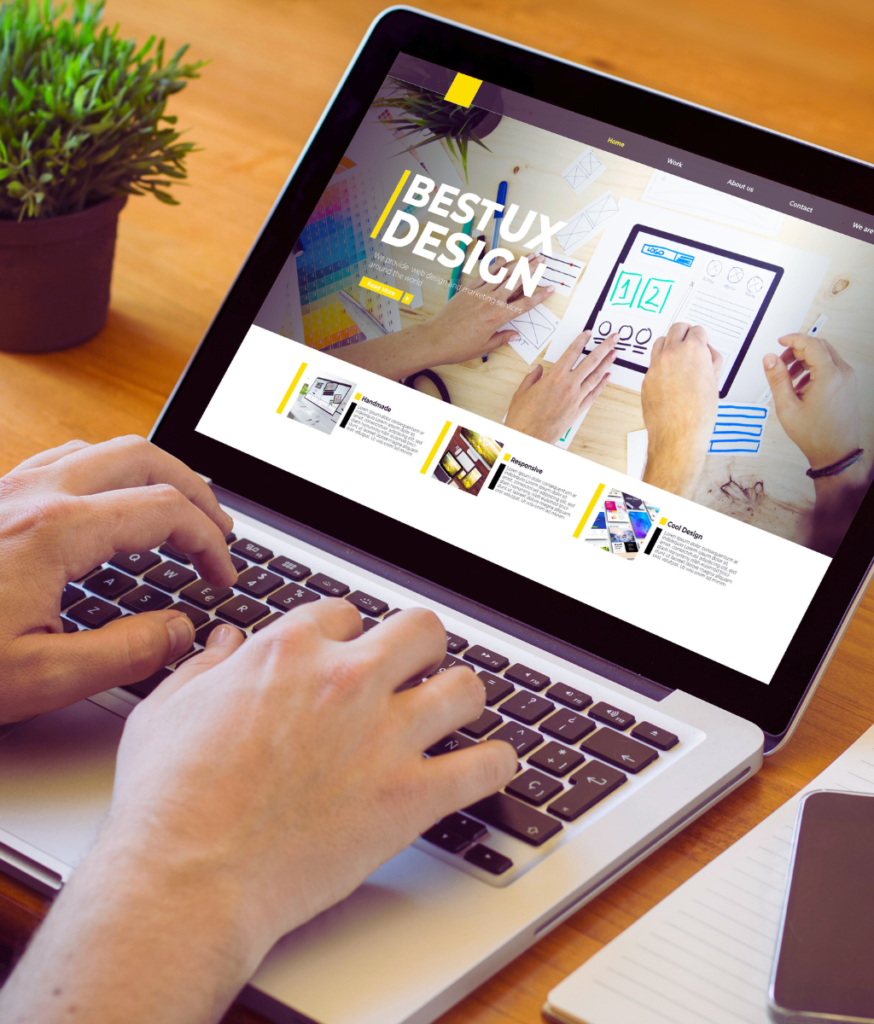Why Deciding On Local Professionals in Web Design Pretoria Matters for Your Service
Why Deciding On Local Professionals in Web Design Pretoria Matters for Your Service
Blog Article
A Comprehensive Guide to Responsive Website Design Techniques
Receptive internet layout has actually ended up being a necessary part in the advancement of digital systems, enabling for a smooth user experience across a multitude of devices. This overview will discover critical techniques such as liquid formats, media queries, and picture optimization that add to efficient receptive style. By recognizing these concepts, designers can create internet sites that not just adapt visually however additionally enhance customer involvement. The landscape of web design is constantly developing, raising concerns about the future of responsiveness and the techniques that will specify it.
Comprehending Responsive Website Design
Receptive web style (RWD) is an approach that guarantees a web site's format and material adapt effortlessly across a selection of devices and display sizes (Web Design Pretoria). This design approach is crucial in today's electronic landscape, where users accessibility websites from smart devices, tablet computers, laptops, and desktop. RWD boosts user experience by allowing a site to preserve capability and looks, no matter the device being made use of
In addition, media questions are used to use various styles based on device characteristics like display size and orientation. This approach makes sure that the website's layout is customized to the particular needs of individuals, boosting usability.
Additionally, RWD adds positively to seo (SEARCH ENGINE OPTIMIZATION) by advertising a solitary, regular URL for a site, which simplifies link sharing and indexing. As mobile phone usage remains to climb, understanding and executing receptive web design is essential for companies intending to reach a wider audience and boost overall internet efficiency.
Trick Concepts of Responsive Layout
To produce an effective responsive layout, numerous crucial concepts have to be considered. This suggests developing for the smallest screens first and progressively improving the design for bigger gadgets.
Second, flexible grids and layouts are crucial. Making use of a grid system that adjusts to different screen sizes enables a harmonious distribution of material, ensuring readability and usability throughout gadgets. This versatility is enhanced by the use family member units, such as ems or percentages, as opposed to dealt with pixels.

Last but not least, focusing on material hierarchy is necessary. Logical and clear company of material improves individual experience, guiding site visitors via the website perfectly, no matter the gadget used. Web Design Pretoria. By sticking to these concepts, designers can create sites that are not just aesthetically appealing however user-centered and also useful throughout all devices
Methods for Fluid Layouts
Fluid designs are necessary for creating adaptive internet experiences that flawlessly adapt to different display dimensions. By utilizing percentage-based widths rather of taken care of pixel values, designers can ensure that components on a webpage resize proportionally, maintaining aesthetic consistency across tools. This technique advertises flexibility, enabling material to adjust and stream as the viewport adjustments.
One efficient method for accomplishing liquid formats is to employ CSS Flexbox or Grid systems. These CSS modules make it possible for designers to create responsive frameworks that can quickly resize and reorganize based upon the offered area. Flexbox excels in one-dimensional designs, while Grid is excellent for two-dimensional setups, offering greater control over positioning and placement.
An additional strategy includes utilizing media inquiries to specify breakpoints where changes are needed - Web Design Pretoria. By defining different styles for various display sizes, designers can modify format homes dynamically, guaranteeing optimum use and aesthetic appeal
In addition, integrating relative systems like ems or rapid eye movements for font dimensions and spacing can further enhance fluidity, as these devices scale based on customer setups or parent aspects. With each other, these strategies facilitate the growth of liquid layouts that advertise an interesting user experience throughout diverse devices.
Optimizing Pictures for All Tools
Photos play an essential function in website design, and optimizing them for numerous gadgets is necessary for improving performance and try this user experience. To accomplish this, developers must utilize responsive picture methods that make certain pictures show appropriately across different screen dimensions and resolutions.
One reliable technique is utilizing the HTML" aspect, which enables defining numerous image resources based upon the display problems. By employing 'srcset' characteristics, programmers can offer different picture resolutions, making it possible for the web browser to pick the most ideal one for the individual's device.
Furthermore, implementing correct documents formats is important. Formats such as JPEG, PNG, and WebP each serve unique purposes and can considerably influence packing times. WebP, for example, uses premium compression, bring about smaller sized file dimensions without sacrificing high quality.
Another essential element is photo compression. Devices like TinyPNG or ImageOptim can lower data sizes, boosting filling speed while preserving visual honesty. Making use of CSS for history images can simplify packing as they can be adjusted more fluidly across tools.
Ultimately, enhancing images not only enhances web site efficiency however likewise adds to much better customer engagement and retention, making it a fundamental method in receptive website design.
Checking and Maintaining Responsiveness
Guaranteeing a seamless customer experience across different devices calls for thorough screening and upkeep of responsiveness. The first action in this process is to make use of a combination of handbook and automated testing devices. Devices such as Google's Mobile-Friendly Test and BrowserStack permit programmers to preview exactly how their web sites execute throughout several gadgets and display sizes successfully.
Furthermore, it is important to do regular audits of your site's format and functionality. This consists of checking for breakpoints, making sure components resize correctly, and confirming that navigation continues to be instinctive. Testing ought to not be limited to visual aspects; capability throughout numerous web browsers and devices have to be examined to determine any inconsistencies.

Final Thought
To conclude, the implementation of responsive website design techniques is important for producing adaptable sites that boost customer experience across varied tools. By adhering to key concepts such as liquid grids, special info media inquiries, and flexible designs, together with optimizing pictures and utilizing receptive frameworks, developers can accomplish aesthetic allure and boosted loading rates. Ongoing testing and upkeep additional make sure that websites remain functional and cosmetically pleasing, inevitably adding to raised customer engagement and complete satisfaction.
Responsive web layout has actually ended up being an essential component in the development of straight from the source digital systems, allowing for a smooth customer experience throughout a wide variety of devices.Receptive internet style (RWD) is an approach that guarantees a web site's format and content adapt perfectly throughout a selection of tools and display dimensions. RWD enhances individual experience by permitting a website to preserve capability and appearances, regardless of the gadget being made use of.
Making sure a seamless individual experience across numerous gadgets calls for thorough screening and maintenance of responsiveness.In final thought, the execution of receptive internet layout strategies is necessary for developing versatile web sites that enhance user experience throughout diverse devices.
Report this page